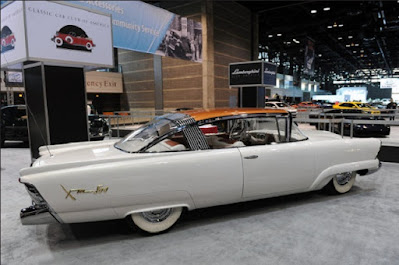HydrogenBeast Candidate - In the realm of supercars and high-performance vehicles, collaborations often pave the way for groundbreaking innovations. Mission H24, in partnership with the Automobile Club de l’Ouest and GreenGT, is at the forefront of such advancements, introducing a cutting-edge hydrogen electric prototype poised to redefine racing as we know it.
 |
| Mission H24 has revealed a new as yet unnamed hydrogen electric prototype concept that will begin track testing in 2025 and is projected to be significantly faster than its current model. (Picture from: AutoSport) |
The genesis of this revolutionary concept traces back to Mission H24's earlier endeavors with the LMPH2G hydrogen concept, making waves with its debut and subsequent track sessions. Fast forward to the present, and the H24 prototype emerges, boasting a revamped powertrain and a promise of unparalleled performance.
 |
| The new car hailed by Mission H24 co-president Jean-Michel Bouresche as “the next exciting step in our move towards zero-carbon motorsport” is planned to weigh 1300kg, and produce 320km/h with a stated aim of being among the top entries in the LMGT3 class. (Picture from: AutoSport) |
 |
| The Mission H24's new car will be powered by a single electric motor, with a maximum power output of 650kW, up from 350kW on the H24 while saving 18kg, and a battery with a maximum output of 400kW. (Picture from: MotorSport) |
With meticulous testing and refinement, Mission H24 has fine-tuned its prototype, shifting focus towards enhancing performance while maintaining a commitment to environmental consciousness. The result? A lighter, faster, and more efficient racing machine ready to take on the challenges of competitive racing.
The enthusiasm from industry leaders like ACO President Pierre Fillon and GreenGT's technical director, Bassel Aslan, further validates the potential of hydrogen technology in offering a cleaner, greener alternative to traditional fuels.
 |
| For efficiency, the Mission H24's new car will only have two hydrogen tanks supplied by Plastic Omnium, instead of the three in the H24, with optimised weight distribution as a result. (Picture from: AutoSport) |
Looking ahead, the upcoming ADESS chassis promises even greater capabilities, incorporating fan input and advanced technologies to push the boundaries of high-performance racing. With optimized weight distribution and enhanced power output, the new Mission H24 prototype is primed to set new standards on the track.
 In summary, Mission H24's latest endeavor isn't just about speed; it's a bold step towards sustainable racing, blending innovation, efficiency, and environmental responsibility. As hydrogen takes center stage in competitive motorsport, get ready to witness a historic shift towards a cleaner, greener future on the world's most iconic tracks. *** [EKA | FROM VARIOUS SOURCES | AUTOSPORT | MOTORSPORT ]
In summary, Mission H24's latest endeavor isn't just about speed; it's a bold step towards sustainable racing, blending innovation, efficiency, and environmental responsibility. As hydrogen takes center stage in competitive motorsport, get ready to witness a historic shift towards a cleaner, greener future on the world's most iconic tracks. *** [EKA | FROM VARIOUS SOURCES | AUTOSPORT | MOTORSPORT ]Note: This blog can be accessed via your smart phone.










































